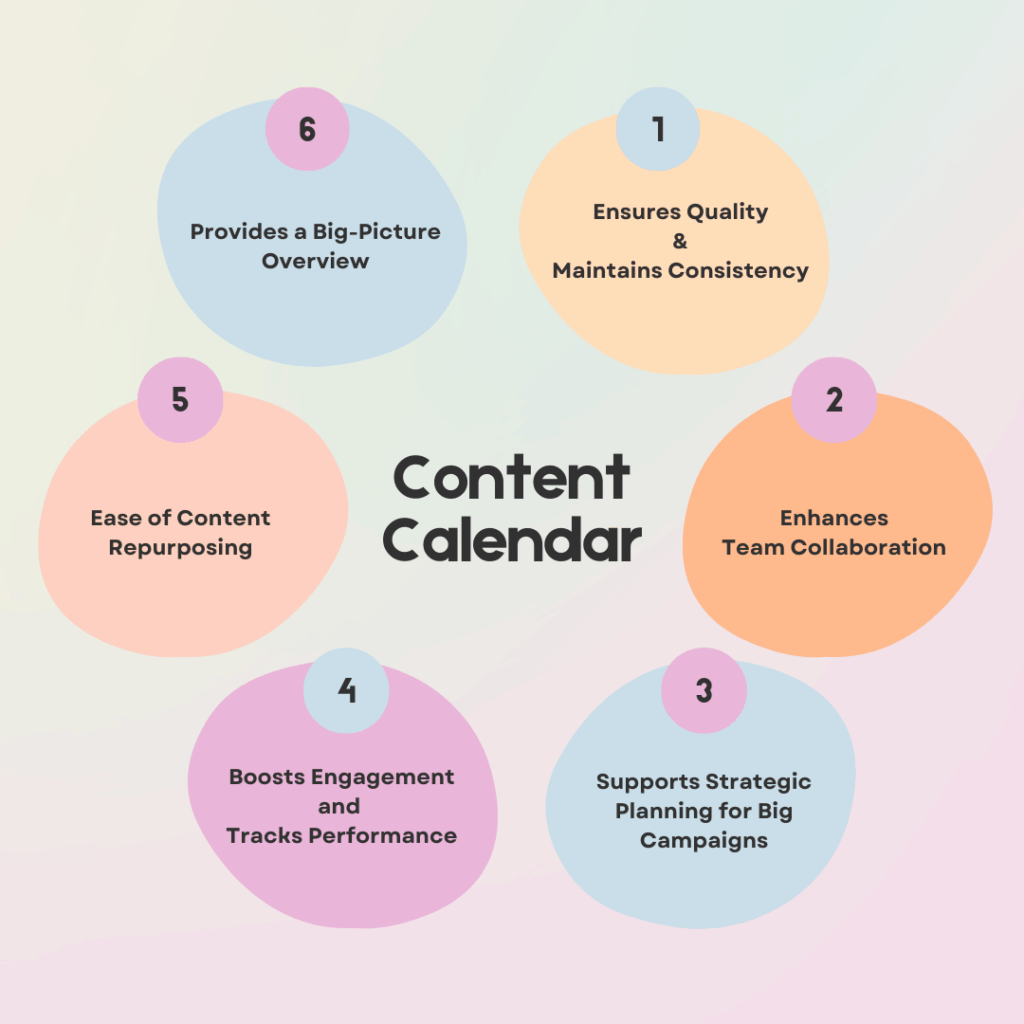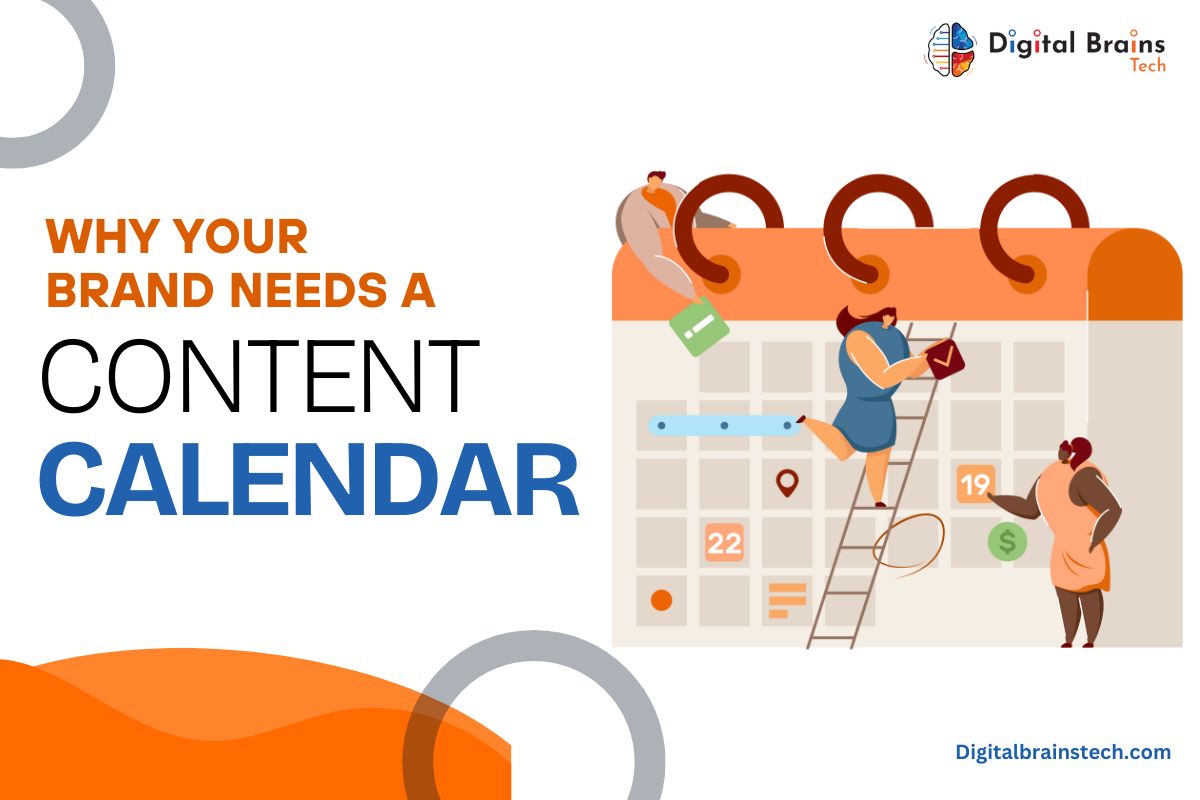The content is the main ingredient for the success of the online presence of a brand. With constant evolution and revolution around the world, one needs to stay updated and keep their audience streamlined through social media. If you are among those who are looking for consistency and aiming for a strategic workflow, then a content calendar is at your rescue. It is a powerful tool and an organizational helper, not only for the content writers but for the entire digital marketing team. An effective content calendar is the backbone of an impactful, successful content strategy, and transforming reactive posting into a proactive one.
What is a Content Calendar?
Also known as an “editorial calendar,” a content calendar is a strategic, detailed plan of upcoming posts on all social media channels. It is a planned sheet where all the posts are organised and scheduled for the date and time. Not only dates, but important elements like tags, links, mentions, images, and videos are pre-planned to avoid any last-minute hassles.
A broader content strategy includes planned promotional activities, status updates, potential partnerships, and updates of the existing content.
So? What’s the main goal of a content calendar? It is to provide an organised and clear overview of your content efforts. You can either do it on a simple digital calendar or use a social media management platform.
Why Content Writers and Marketing Teams Need a Content Calendar?

Everyone involved in content creation for the success of a brand needs to have an organised structure of what is to be done in the coming days. It not only avoids missing the important dates, but also saves one from the last-minute hassles of creating a post. It has a multitude of benefits that are simply non-negotiable for success, take a look-
- Ensures Quality & Maintains Consistency: You can’t expect to get meticulous results on social media by posting irregularly. A content calendar helps to prioritise quality and attain consistency and style across all platforms. When you have proactively scheduled your content posts for the next month, you have an ample amount of time to focus on quality. Designers and seniors can catch typos, check their work thoroughly, and see if the post aligns with the brand voice. Hence, assuring quality and consistency.
- Enhances Team Collaboration: Creating a calendar for your content is a centralized approach. It provides visibility for all contributors, preventing bottlenecks, ensuring a consistent workflow. A well-structured content calendar optimises cumbersome approval workflows within organizations. A clear and visual overview of what is to be done establishes clear communication in the organization. It aligns everyone on the timelines, objectives, and implementation. With time, even the cross-functional collaboration improves and aligns.
- Supports Strategic Planning for Big Campaigns: Product launches, campaigns, and events become easier when content calendars are there to coordinate them. The structured content calendars make sure that social media posts are synced perfectly with the theme of the campaign. It allows stakeholders to view the plans and provide feedback on them. Hence, with this alignment and planning in the entire team, it effectively highlights and promotes each phase, maintaining consistent messaging across all channels.
- Boosts Engagement and Tracks Performance: A content calendar makes the task of the digital marketing team easier. It helps to track what’s working. With the help of the right tools, you can not only manage content but also measure results in one place. Track click impressions, audience, and engagement growth to improve your strategy over time.
- Ease of Content Repurposing: With the performance of the past content, you can decide your future postings. The high-performing metrics can be adopted for new platforms or recycled. It will not hamper your delivery of engaging material, with a content calendar, repurposing content saves time and resources. Hence, strengthening your content engagement over time.
- Provides a Big-Picture Overview: Hidden blunders like publishing too many similar pieces at the same time can be reduced. A content calendar provides a bird’s-eye view of upcoming content. Such pitfalls can be avoided. This overview ensures all content-related tasks are accounted for, from new posts to updates of old articles, ensuring nothing falls through the cracks.
Also Read: How to Build a Winning Digital Marketing Strategy for Your Startup
Key Elements of a Comprehensive Content Calendar
Your content calendar must have the following elements to make it an effective one. You can reap the best benefits of a content calendar if it contains the following-
- Editorial Content: The specific pieces of content you want to publish.
- Full details: Full copy, media assets (images, videos), relevant links, tags, and @-mentions.
- Decided Platform: Where do you want to publish your content? For example, Medium, Own Website, Guest Posting Sites, Facebook, Instagram, LinkedIn, X, TikTok, Pinterest, etc. It facilitates easy visibility of content status for all contributors.
- Promotional Activities: Plan in detail how you want to amplify your content. For example, podcast interviews, various social networks, a newsletter, or Reddit AMAs. These can be titled distinctly or colour-coded for clarity.
- Future Ideas: You can build a table on the sheet/ tool for brainstorming ideas. It gives an idea for the upcoming calendar, and also saves them from distraction from the currently planned content.
- Detailed Content Information: For each entry, include:
- Title of the post.
- Target keywords.
- Due date for submission of content and publication.
- Status (e.g., “Assigned,” “WIP,” “Done,” In Review,” “Approved,” “Published”).
- Platform
- Call to Action (CTA).
- Assigned an employee for each respective step.
Quick tips:
- Use a template rather than creating it from scratch.
- Personalize it with the specific needs of the brand.
- Integrate platforms like Instagram, TikTok, LinkedIn, and Facebook.
Related What is Content Mapping?
Step-by-Step Guide to Create & Manage a Content Calendar
Creating a content calendar helps you plan, post, and track your social media content more effectively. Here’s how to do it step by step:
1. Connect Your Social Media Accounts:
Use a tool to connect all your social media accounts, like Instagram, LinkedIn, Facebook, TikTok, X, in one place. A single dashboard helps you manage everything.
2. Review Existing Content:
Ensure to have a tab for the key metrics like impressions, clicks, and shares to check how your content has performed. Also, study your competitors. You can use a social media audit template to stay organized.
3. Choose The Vitals:
Now is the time to pick the
- Channels you want to publish (e.g., Instagram for visuals, LinkedIn for B2B).
- Content types (blogs, images, guest posting and videos)
- Post frequency as per your planning and competitor analysis.
4. Brainstorm Content Ideas:
Think about the pain point of the readers. Look for the questions they ask on different forums or comment sections, or competitor posts. Giving them the solution to these problems will help your brand grow and become credible. You can use Semrush tools to find trending and relevant topics.
5. Organize Assets in One Place:
Store approved content, data, images, and videos in an asset library. For ease, organize them by theme, content type, and campaign, theme.
6. Approval Process:
Set up approval workflows from step 1 to step n. It will help to streamline the content process. You can hire the best digital marketing company in the USA and get your work done by experts.
7. Schedule and Automate Posts:
Plan and schedule your posts in advance to stay consistent. You may pick a tool or set your timings.
Tip: Choose the best time as per your audience.
8. Stepwise Content Creation:
Plan every step, research, writing, designing, and editing in your calendar. Assign each step to the right person to keep everything on track.
9. Monitor Performance:
To measure results like tracking engagement, clicks, leads, conversions, and views, you can use your calendar dashboard.
Read Benefits of Content Marketing for Your Business
Ground Your Planning with a Social Media Calendar
Planning always saves time on a daily basis. Be it the content manager, writer, or marketing team head, the content calendar is beneficial for all. All the best digital marketing companies in the US use different tools to make their calendar effective. Even now, the collaboration of AI in the calendar has transformed how we used to interact with it. AI Mode is here to bring another revolution for content writers.
So, embrace the power of a content calendar. It is the key to consistent quality, seamless collaboration, and measurable success in your content marketing efforts.
Keep trying, keep learning, and keep winning!
Also Read Content That Converts: B2B Content Marketing Examples, ROI & Lead Generation




